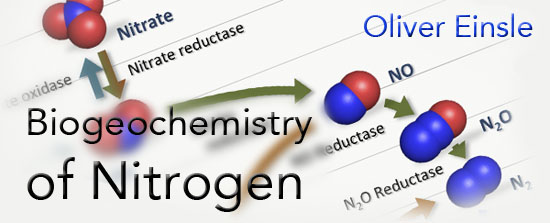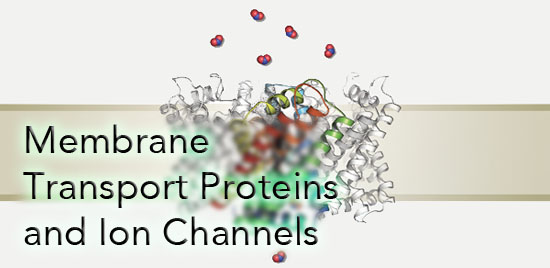Research Overview

The element nitrogen is a constituent part of all classes of biological macromolecules, but assimilation for biosynthetic purposes is only possible in the fully reduced form of ammonium, NH4+. In nature, the interconversions of all other redox states of nitrogen form a complex network of biochemical pathways known as the biogeochemical nitrogen cycle.
All enzymatic steps within the nitrogen cycle are catalyzed by metalloenzymes, many of which form complex redox machineries in or at biological membranes. At present our projects surrounding the Nitrogen Cycle primarily focus on the metal-containing enzymes catalyzing the conversions of the different modifications, but also on the membrane-integral transport proteins that shuttle charged intermediates across biological membranes.
The following topics represent the main lines of research at present:
- Nitrogenase - The only known enzyme to break the triple bond of the inert N2 molecule.
- Nitrous Oxide Reductase - A multicopper enzyme able to reduce the critical greenhouse gas N2O.
- Multiheme Cytochromes - A diverse family of oxidoreductases that catalyze transformations of different small molecule compounds.

Proteins containing metal cofactors are among the key players in many of the most fundamental biochemical processes, such as energy conservation, redox catalysis and signaling. More than one third of all proteins are thought to be metalloproteins, and the complexity of proteins as chiral, multidentate ligands opens up a catalytic potential that is as yet unmatched by synthetic chemistry. Membrane proteins on the other hand connect cellular compartments separated by lipid bilayers. They function as transport proteins, parts of respiratory chains, receptors or scaffolds for the assembly of structures of higher order. Key targets at present are:
- FocA Formate Channels - Pentameric Anion Channels that have the ability to make a physiologically important switch from passive export of formate at high external pH to active import of formic acid at low external pH.
- NirC Nitrite Channels - The transport systems required to shuttle the nitrite anion, a central intermediate of the biogeochemical nitrogen cycle, across membranes.
We set out to understand the functional properties of membrane proteins and metalloproteins by using a combination of biochemical and biophysical methods, including X-ray crystallography, spectroscopy and kinetics.

